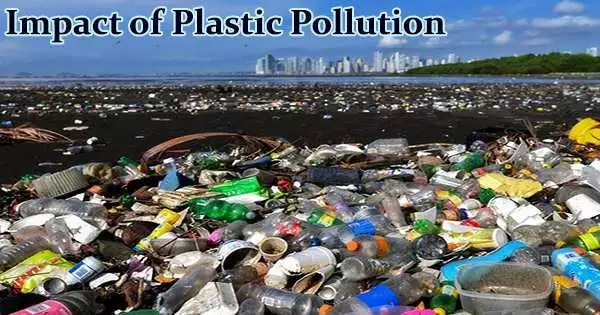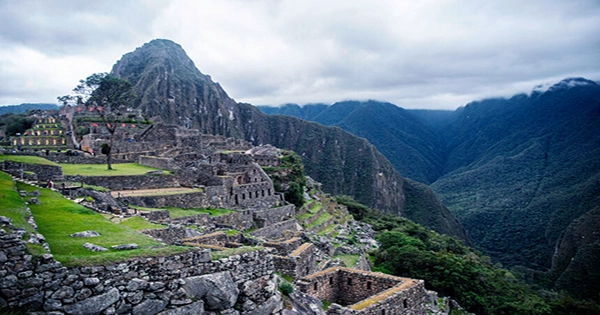Plastic waste buildup in the environment is what leads to plastic pollution. It can be divided between primary plastics, which include bottle caps and cigarette butts, and secondary plastics, which are produced as a result of primary plastics degrading. It can also be classified according to its size, ranging from microplastics, which are tiny plastic particles (<5 mm) scattered in the environment, to macroplastics.
One of the materials that is utilized the most is plastic. These days, from stores to everyday homes, it is everywhere. The primary explanation is the low cost of plastic. Compared to other options like paper and cloth, it is less expensive. This is why it is so common.
Plastic pollution can take different forms including:
- The accumulation of waste
- The buildup of marine debris, plastic pieces or microparticles, and non-biodegradable fishing nets that continue to trap waste and wildlife
- Waste causing the death of animals by ingestion of plastic objects
- The arrival of microplastics and microbeads of plastics from cosmetic and body care products
One million plastic bottles are bought globally every minute, and up to five trillion plastic bags are used annually. In all, 50 percent of all plastic produced is made for one-time usage only before being discarded. Practically anything, whether liquid or solid, may be made using plastic. Additionally, it comes in a variety of shapes that we can readily mold.
Plastic has experienced tremendous success since it began to be used commercially in the 1950s. Its output is rising tremendously on a global scale. Its exceptional properties, such as ease of shape, affordability, mechanical resistance, etc., are the reason for its success. Plastic, the perfect material for packaging, is widely used.
The entire planet, including people, animals, and aquatic life, is being negatively impacted by plastic pollution. It is escalating like a disease with no known treatment. To avoid it as soon as possible, we must all be aware of the negative effects it has on our life. The generation of plastic garbage, however, more than tripled between the 1970s and the 1990s, indicating a parallel increase in plastic manufacture.
In the first decade of the twenty-first century, we produced more plastic waste than in the previous forty years combined. Our water is polluted by plastic. Tonnes of plastic are poured into the ocean every year. Plastic doesn’t dissolve, therefore it stays in the water and reduces the quality of the water. This means we won’t be left with clean water in the coming years.
Additionally, plastic pollutes our land. The soil is harmed when plastic garbage is dumped in landfills. The soil becomes less fertile as a result. In addition, a variety of disease-carrying insects congregate there, spreading dangerous diseases.
Additionally, because plastic bags impede the process of photosynthesis in agricultural areas, they also have an impact on crop development. The confinement of animals in nets or other big detritus is the most obvious consequence of plastic pollution. It is a significant factor in the deaths of birds, turtles, and marine animals.
Ingestion is a second direct effect that affects the entire marine ecosystem’s food chain. Most significantly, marine life is harmed by plastic pollution. The aquatic animals confuse the plastic waste in the water for food. They devour it and eventually pass away. One dolphin, for example, perished as a result of a plastic ring that got lodged in its mouth. Because of its inability to open its mouth, it starved to death.
Thus, we can observe how pollution from plastic is killing innocent animals. Currently, we generate 400 million tonnes of plastic garbage annually. Plastics may be detrimental to human health because of the chemical additives employed in their manufacture.
In fact, exposure to harmful chemicals released by plastic can result in cancer, birth deformities, weakened immunity, and other medical issues. To stop it, we must take significant action. Plastic bags must be replaced with alternatives like cloth bags and paper bags. We must recycle plastic that we purchase. We must refrain from consuming bottled water, which is a major source of plastic pollution.
Additionally, about 98% of single-use plastic items come from “virgin” feedstock, which is fossil fuel. By 2040, it is anticipated that the amount of greenhouse gas emissions related to the manufacture, consumption, and disposal of traditional plastics derived from fossil fuels will account for 19% of the world’s carbon budget.
Additionally, plastic lingers in the environment for more than a century before dissolving, which contributes to the growth of plastic pollution. Governments should also support innovation to ensure that the plastics we require are created and introduced to the market in a way that permits reusing them.
















